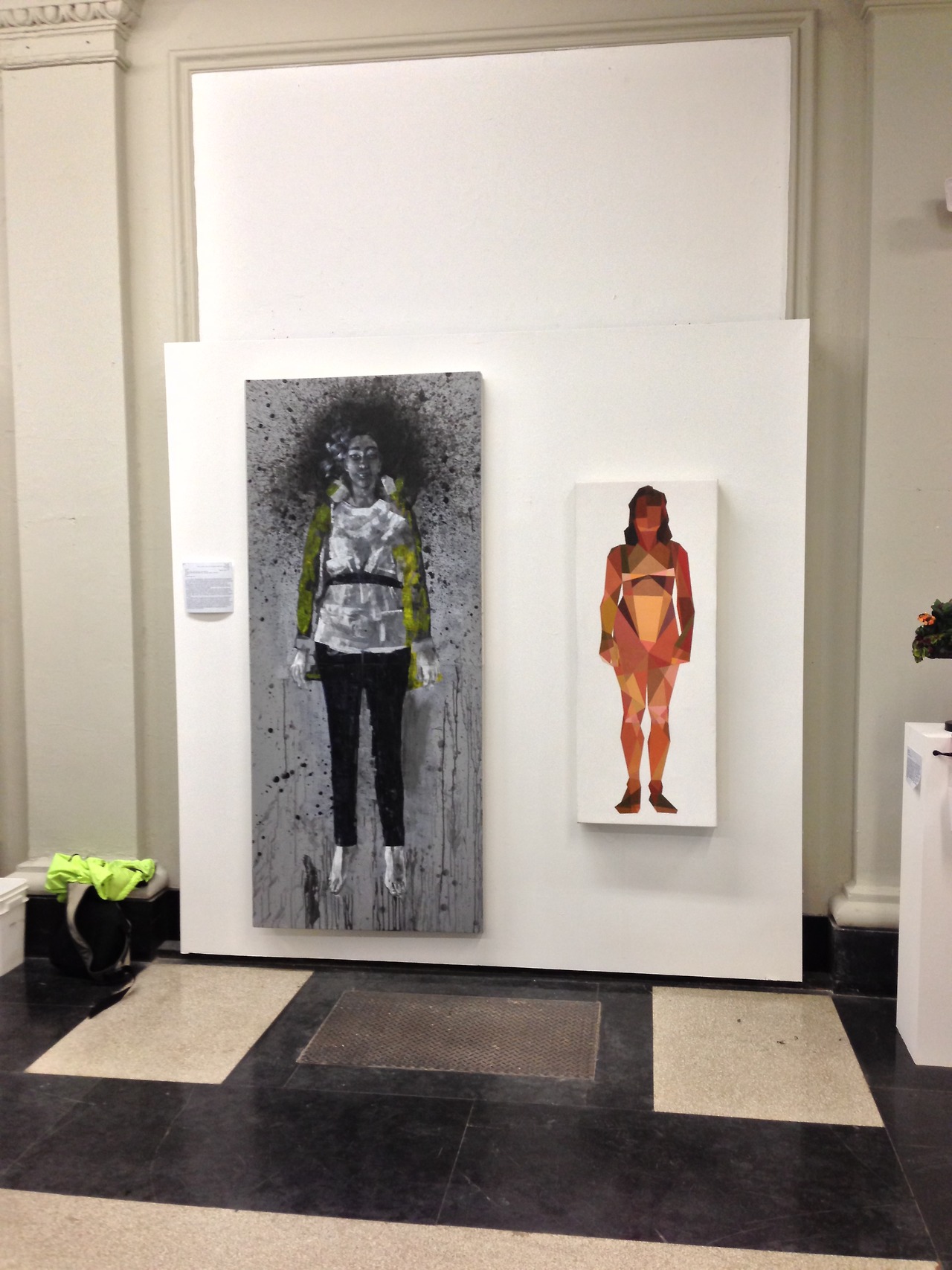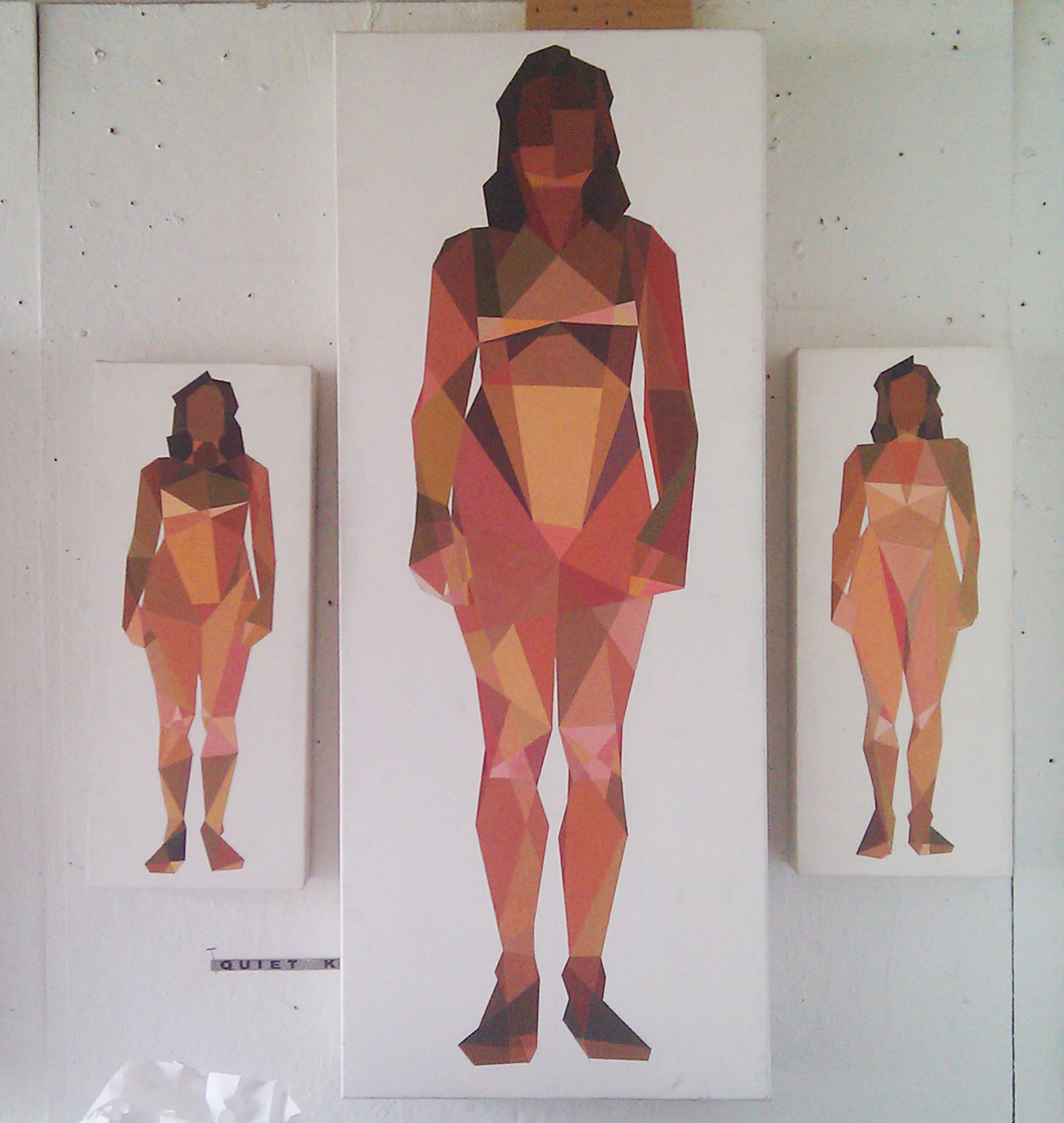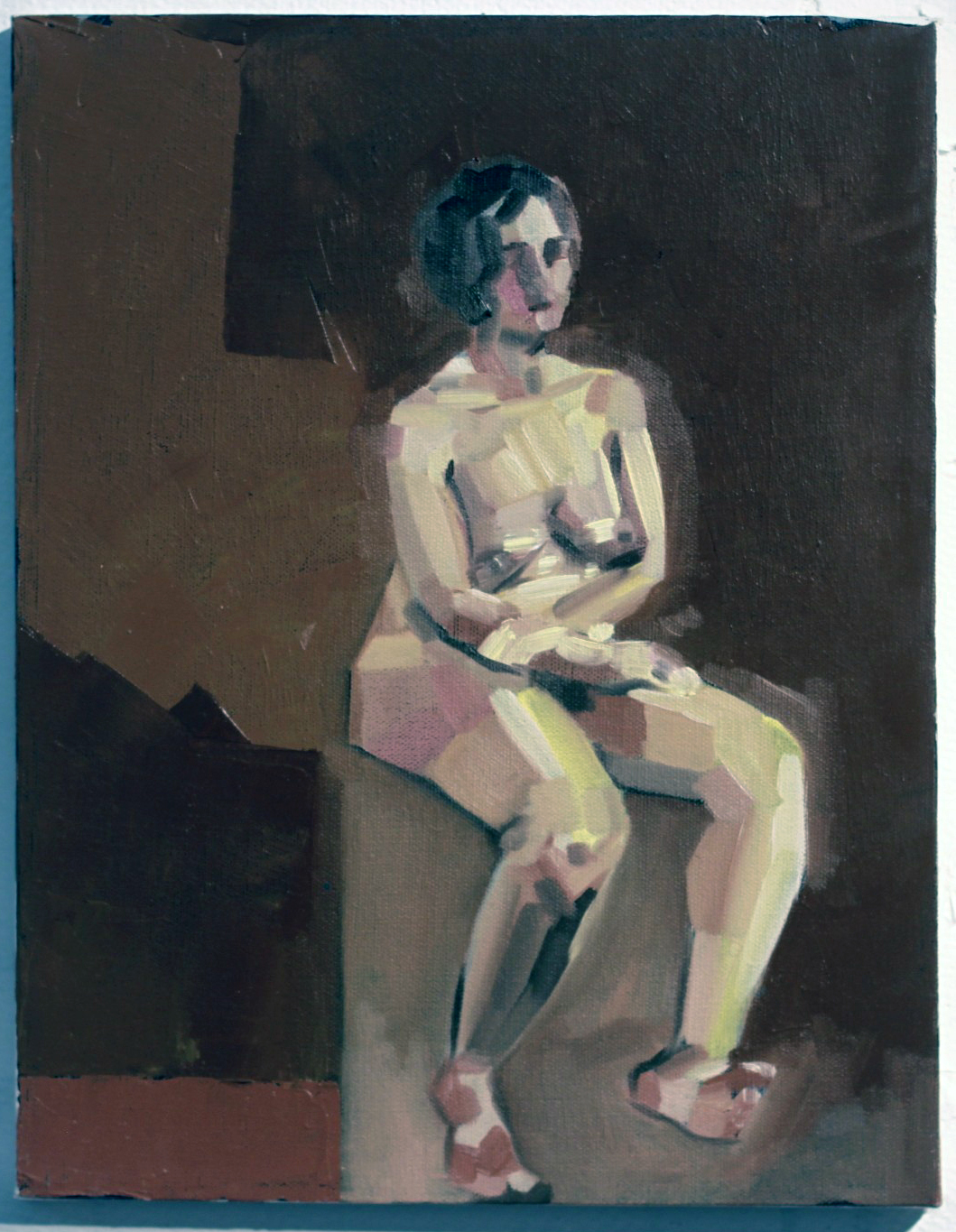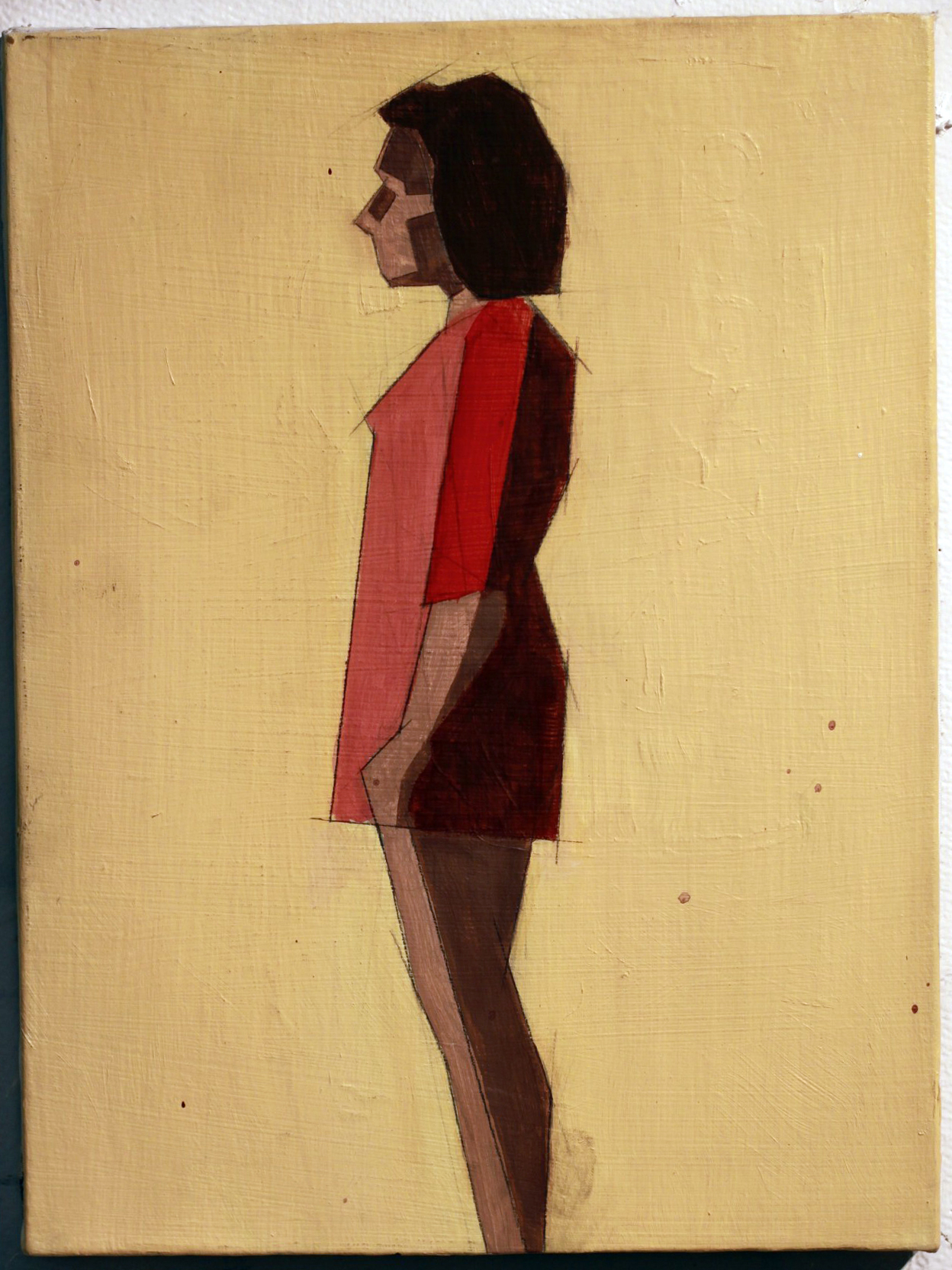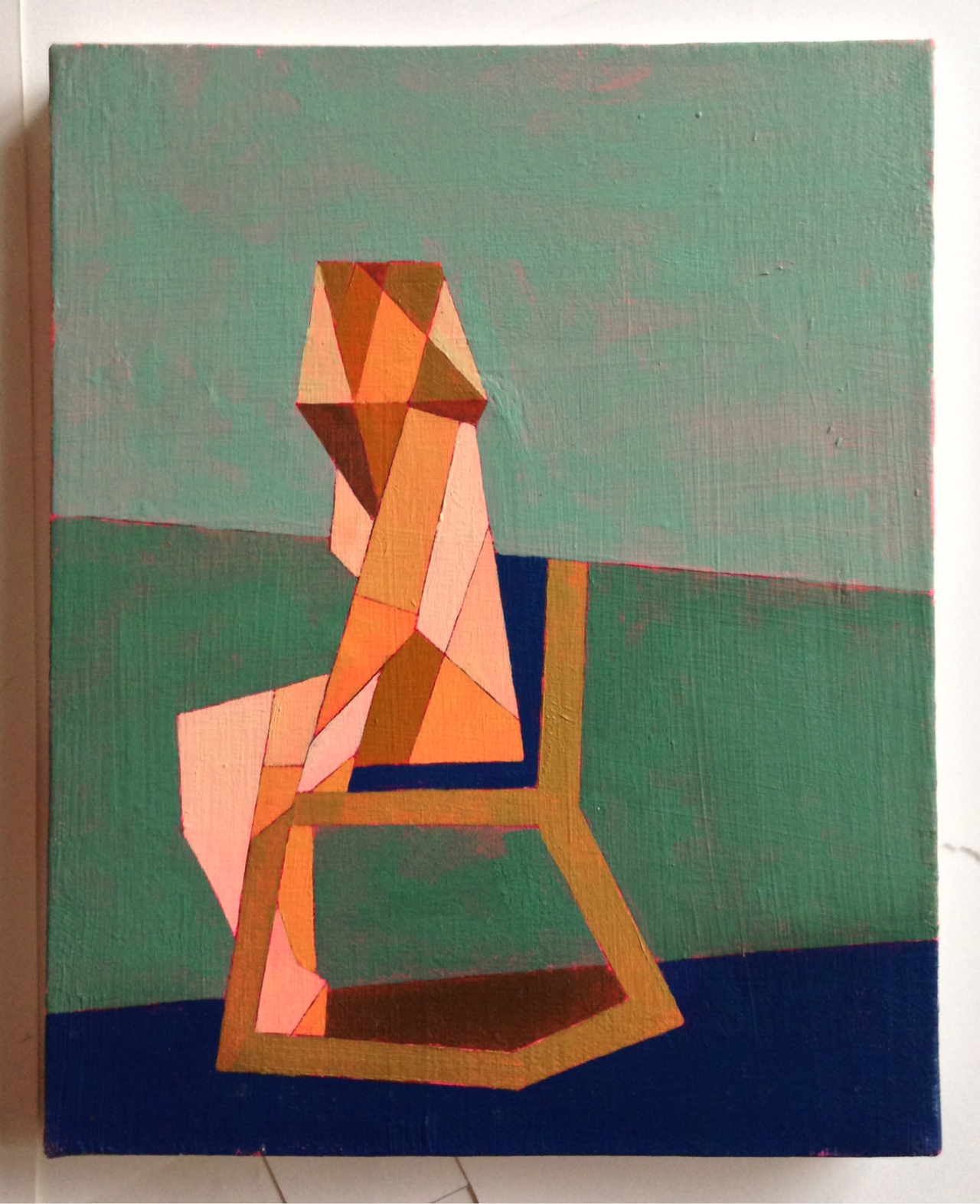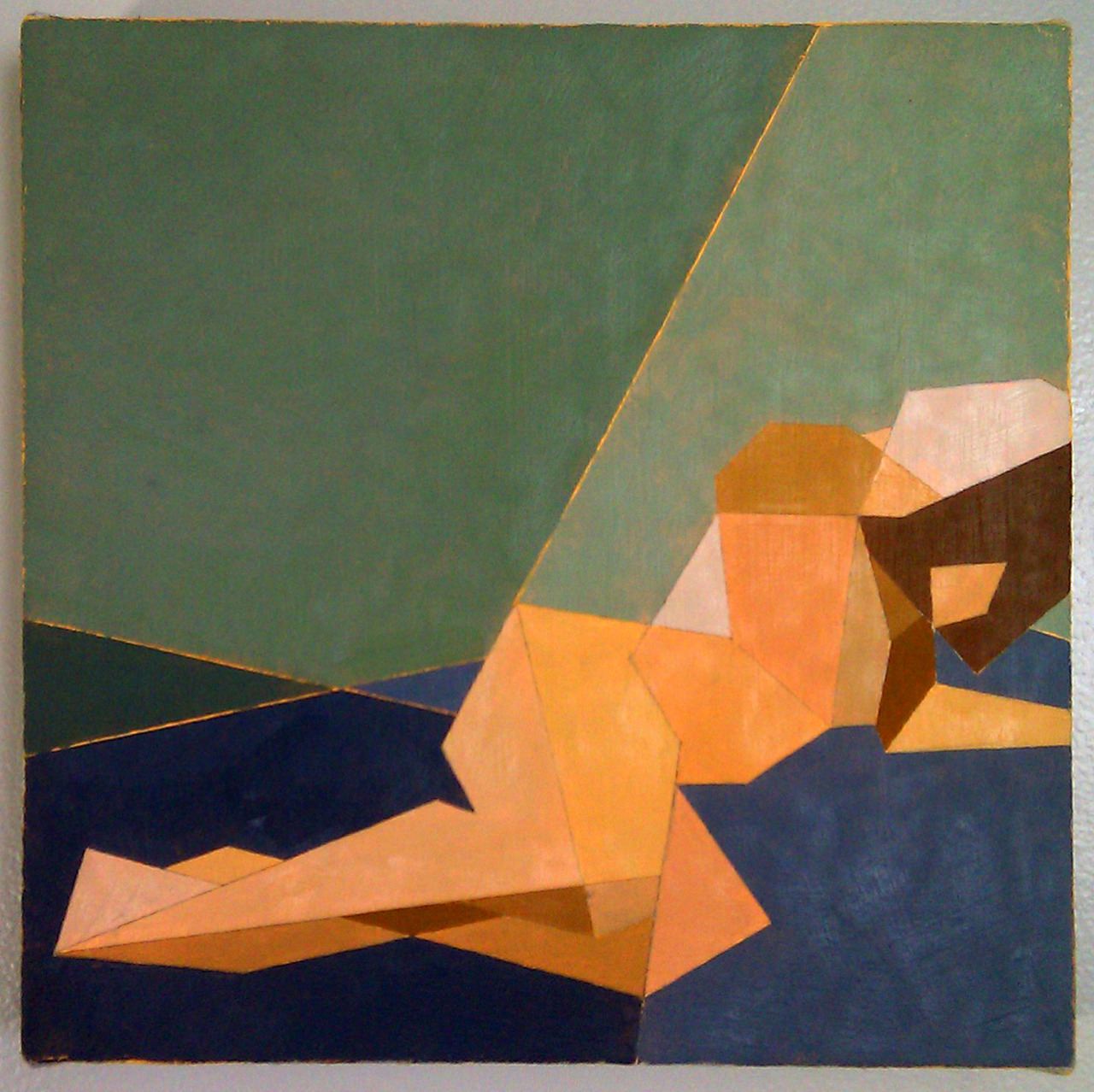Geometricized Women from Ian Gage
The women in Ian Gage’s paintings have recently begun transitioning – changing from realistic women splashed in dark paint to geometric pixillations that fragment her body and surroundings. The result is a shattered representation of women like minimalist stained glass windows, the light shining off of each shape differently, and with her body arranged in sometimes symmetrical but always balanced compositions.
Toll, Knell, & Peal reveal three different interpretations of the same front facing woman, and in each, her body is shattered into different shapes shaded in different shades of light. The transition between Ian’s realism style and his fragmented one can be traced from work to work, like a breadcrumb trail of the artistic process. Scrolling through his Tumblr is like reading a mystery novel where all the clues are visual, connecting the works that come before and after.
What is the first thing you can ever remember drawing?
I think Godzilla. I was pretty preoccupied with typical giant robot/creature type products as a child—typically referred to as kaiju, though I don’t usually throw around that term. A Google search of that pretty much sums up the things I drew as a child.
To you, what is it about women that make them so worth painting?
The anecdote I usually dispense as an answer for this is that I only took up an interest in drawing in response to a middle school crush. The crush in question was very interested in art and I pursued it to impress her. She moved away and nothing ever came of that, but I kept drawing. Ever since that point I’ve been interested in drawing or painting my romantic interests—it’s fairly transparent at this point to the people close to me.
I think there are a lot of things about painting women, in particular romantic interests, which one has to be cautious about. The first thing you hear in art school is that portraying someone you’re close to inevitably leads to an idealization complex—you’re never really able to accurately portray your subject because you’re occupied trying to flatter them. I’d like to think I’ve broken that barrier based alone on my obsession with proportionate accuracy, but one can never be trusted to judge themselves objectively. I can at least say in my defense that no one has mentioned idealization critically to me for probably two years. The second—and more broadly relevant point of caution, is my position as a male painting the female form. After seeing a Hilary Harkness lecture this past fall I grew somewhat uncomfortable with the plausibility of being labeled a misogynist based on my work, and so I try to be as aware of the presence of the male gaze in my paintings as possible. The effectiveness of that awareness can really only be judged by the female audience—I am at their mercy under the circumstances and that is the way it ought to be. Those are the two chief dangers I think.
I realize of course I have yet to answer the question, but that feels like some necessary pretext. I think I’ve always been very interested in making art about women due to their general impact on my life; it’s difficult to give an answer less nebulous than that. Painting women is something I generally don’t question, it’s just something that feels necessary, and has felt more so as I’ve gotten older. Continuing painting women, and justifying it, involves a lot of thought and deliberation on a daily basis; particularly revolving all of the implications of me painting women, and of painting women in general.
When did you first begin moving away from straight representations to geometry-inspired interpretations, and why?
I really started painting the geometric pieces in Catherine Kehoe’s representative painting class. From the beginning of the class I assumed we were learning to paint representatively (a logical assumption) but we were in fact learning the building blocks. I assumed the class structure would revolve around Kehoe giving us broad lessons on the tenets of painting naturalistically, and then individual suggestions to improve the realism of our work. I was chiefly interested in exhaustive detail—I wanted to paint like Scott Prior by the end of the class.
I found fairly quickly she was teaching the opposite of detail. Kehoe encouraged us to reduce the picture plane to the simplest shapes possible. I fiercely resisted this for about half of the semester, at which point I became exasperated and painted an exhaustively reductive study in an attempt to parody her lessons. It was absolutely meant to be a juvenile jab at her teaching, but to my surprise she loved the painting and encouraged me to pursue it further. For the duration of the class I developed a vocabulary in a style I had originally created as a joke, and grew to like it despite the fact I was painting expressive acrylic paintings in my personal studio. When I had my final critique in my painting studio the professor and guest artists were enamored of the Kehoe paintings and uninterested in my expressive paintings. That was the point at which I decided I needed to explore reductive painting more.
How would you describe the differences between those two styles?
Per the usual tortured artist criteria: I was in an emotionally turbulent point in my life for about a year, during which I lacked a single subject to paint. During that year I was really painting self-portraits with other people’s faces—I wanted to paint women but really just wanted to paint what I was feeling. That kind of expressive venting was the source of the majority of the imagery in that period of painting.
In a sort of coincidental windfall I was transitioning to painting geometrically when I met my current girlfriend, who is the subject of all of my paintings since that point (about a year now). In my personal life I moved into a more stable place, and my paintings became a lot more stable too. I think under these circumstances the primary difference is that the older paintings are very expressive and energetic; I was clearly being very physical with the works, and the current paintings are more analytical. I’m interested right now with proportionate accuracy, the dynamics of different geometric hierarchies, and color theory. Succinctly, the difference is expression vs. study.
Who are these women? What do they represent to you?
The current paintings are all of Melissa, my girlfriend. Most of the older works are of Emma, a friend. The Emma paintings really fall under the self-portrait category, they’re about me at the time if anything. There were a couple of early Melissa paintings that fell under that category as well, namely Seam Ripper and Discrete Mathematics, after which point I dropped the expressive self-portrait vein for the reductive paintings.
The reductive paintings are a lot less about expression and more about study. Every painting is an attempt at adding or manipulating a variable in a previously established control. When something works I add it to the control; I add it to my toolbox. When it doesn’t work it remains exclusive to that painting. For instance: the blank figures in Seated Nudes 1 & 2 were an accident—I had placed a red ground, drawn the space, and painted the backgrounds. I decided before I painted the figures that they looked interesting as they stood, and left them. The silhouetted figure became part of my vocabulary at that point, and it reappeared in later paintings.
As far as what the women in the paintings represent to me beyond the above technicalities, I can’t really say. I try not to assign meaning to my paintings; I find I’m opposed to explaining the content because it places the painting in a box. A painting is infinitely more valuable to the viewer when they can assign their own meaning to it or attempt to glean the meaning themselves.
What sort of impression do you hope your works leave on the viewer?
It’s difficult to say based on the above statement. I hope it strikes a chord with them, I hope there’s something in them that they can take away. I hope they want to spend more time with it than five seconds.
[pureslideshow] https://thingsworthdescribing.com/wp-content/uploads/2013/03/gage8.jpg;https://thingsworthdescribing.com/wp-content/uploads/2013/03/gage7.jpg; [/pureslideshow]
Ian will be graduating from Massachusetts College of Art and Design this spring.
See more of his work on his Tumblr.

